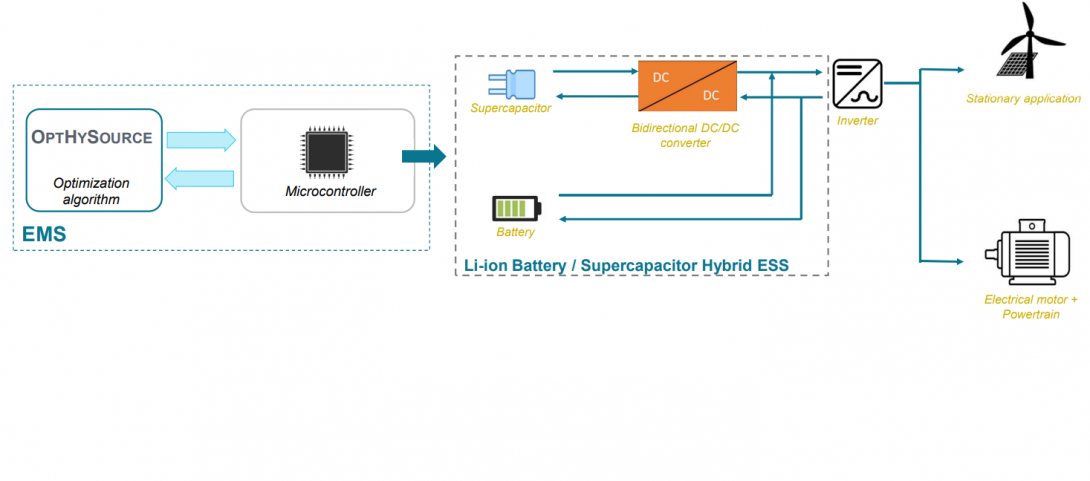OptHySource
Energy Management System (EMS) for batteries and supercapacitor hybridization
Excellence area
Energy Systems in Transition
Field
Energy / Power Conversion
Energy Storage
Smart Energy Systems
Academic institution
University of Strasbourg
Business organisation
SATT Conectus Alsace
University of Strasbourg
University of Strasbourg
SATT Conectus Alsace
SATT Conectus Alsace
Share your knowledge
Showcase your excellence!
Please contact us and submit your project.
Get involvedAbout the project
Innovative algorithm, which ensures the optimal usage of capabilities of both Liion
and Supercapacitor devices
Optimal utilization of the voltage operating range of both components
Adapted for a wide range of applications (mobility, stationary…)
Applications:
o Main applications considered : logistics vehicles (e.g., forklifts), buses
o Other applications :
o Mobility: Electric cars, Agricultural machinery, Trucks
o Stationary : Renewable energy storage, Frequency regulation, UPS
and Supercapacitor devices
Optimal utilization of the voltage operating range of both components
Adapted for a wide range of applications (mobility, stationary…)
Applications:
o Main applications considered : logistics vehicles (e.g., forklifts), buses
o Other applications :
o Mobility: Electric cars, Agricultural machinery, Trucks
o Stationary : Renewable energy storage, Frequency regulation, UPS

Copyright pictures:: n/a
Uniqueness
Compared to a mono-source system (e.g., Li-ions battery)
o Lowers the battery’s size
o Preserves the reliability of storage devices (longer lifetime/cycles)
o Reduces TCO (Total Cost of Ownership)
o Improves the response time (milliseconds vs. seconds for mono-source)
o Recovers almost 100% of the braking energy (for mobility solutions)
Vs another hybrid system
o After hybridization, higher reduction of the battery’s effective current
o Optimal utilization of the voltage operating range of the supercapacitator
o Lowers the battery’s size
o Preserves the reliability of storage devices (longer lifetime/cycles)
o Reduces TCO (Total Cost of Ownership)
o Improves the response time (milliseconds vs. seconds for mono-source)
o Recovers almost 100% of the braking energy (for mobility solutions)
Vs another hybrid system
o After hybridization, higher reduction of the battery’s effective current
o Optimal utilization of the voltage operating range of the supercapacitator
Change potential
Innovators
Contact
Register to view contact information and be able to reach out!

Michele Ranaldo
Energy Systems in Transition
« Science for the Engineers »
Contact
register to access
register to access